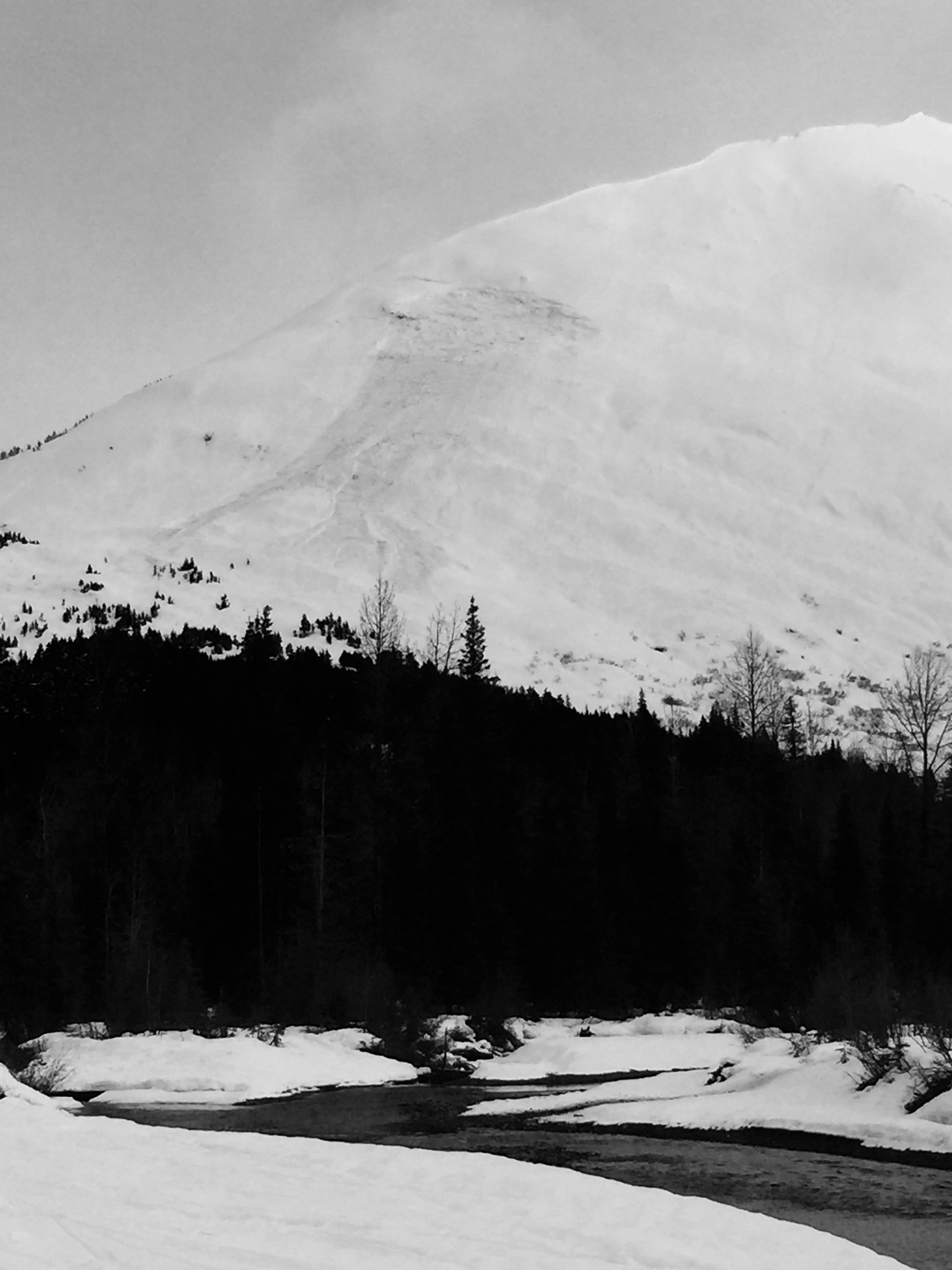Turnagain Pass
|
|
The avalanche danger is MODERATE today above treeline where fresh wind slabs 1-2′ thick will be possible to trigger on freshly wind-loaded slopes. Cornices are also of serious concern in the alpine as they are large and tender right now. In the mid-elevation band, glide cracks are numerous and avalanching full depth, generally on their own schedule.
Note: The Girdwood Valley saw a lot more precipitation than Turnagain pass yesterday (see weather table below). If headed into the backcountry around Girdwood expect fresh storm snow instabilities in addition to wind slabs and cornices.
The Chugach National Forest Avalanche Information Center and Friends of the Chugach Avalanche Information Center are pleased to announce the launch of an observations program partnership with Hatcher Pass Avalanche Center.
By clicking the €œObservations € link on both hatcherpassavalanche.org and www.cnfaic.org, users can now browse and submit Hatcher Pass observations. Data is mirrored on both sites giving Southcentral Alaska backcountry enthusiasts the ability to quickly browse recent snowpack and avalanche observations throughout the region. Please submit your own observations and spread the word to others. Huge thanks to all those folks who have already submitted observations!
Save the dates! Hatcher Pass Avalanche Center and Friends of the CNFAIC are also joining forces to support FREE avalanche education at Hatcher Pass and in Palmer. There will be a FREE companion rescue workshop on Saturday, February 13th, 10:30am-12:30pm, Hatcher Pass Gold Mint Lot and a FREE avalanche awareness class Wednesday, February 17th, 6:30-8pm, Palmer High School Library. Click HERE for more info!

